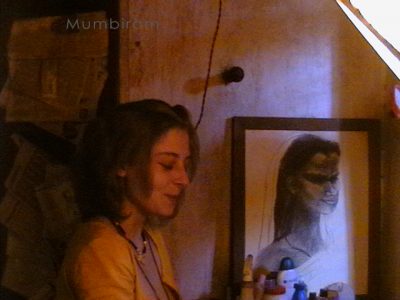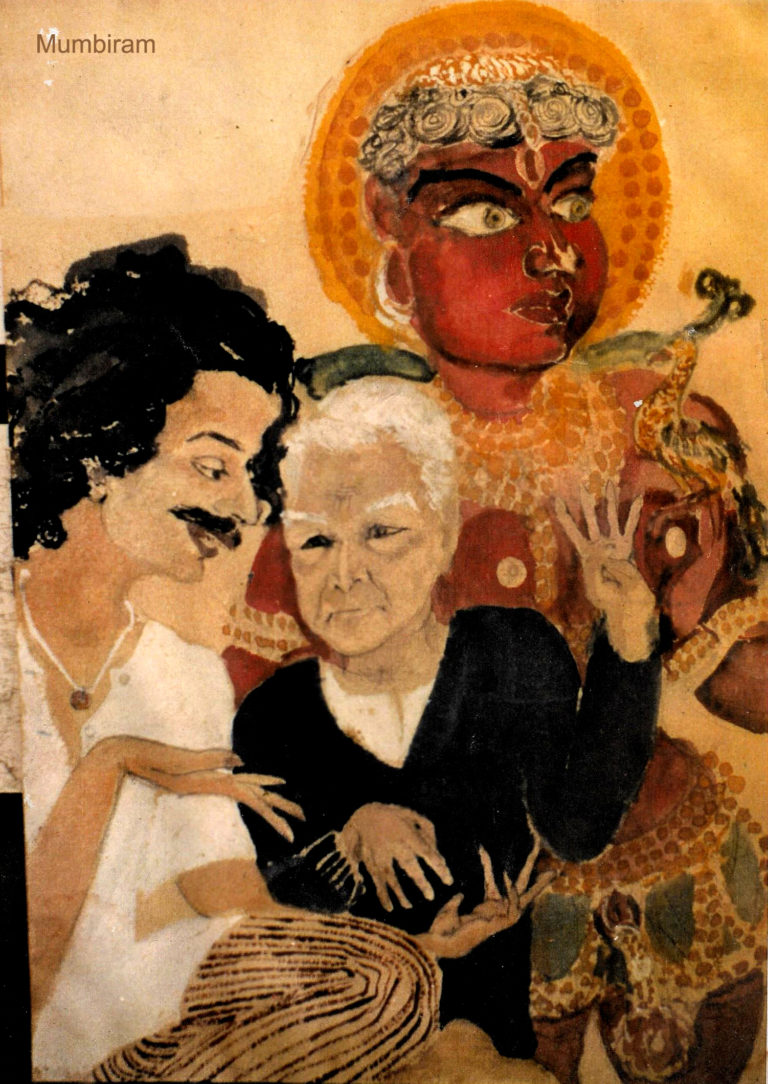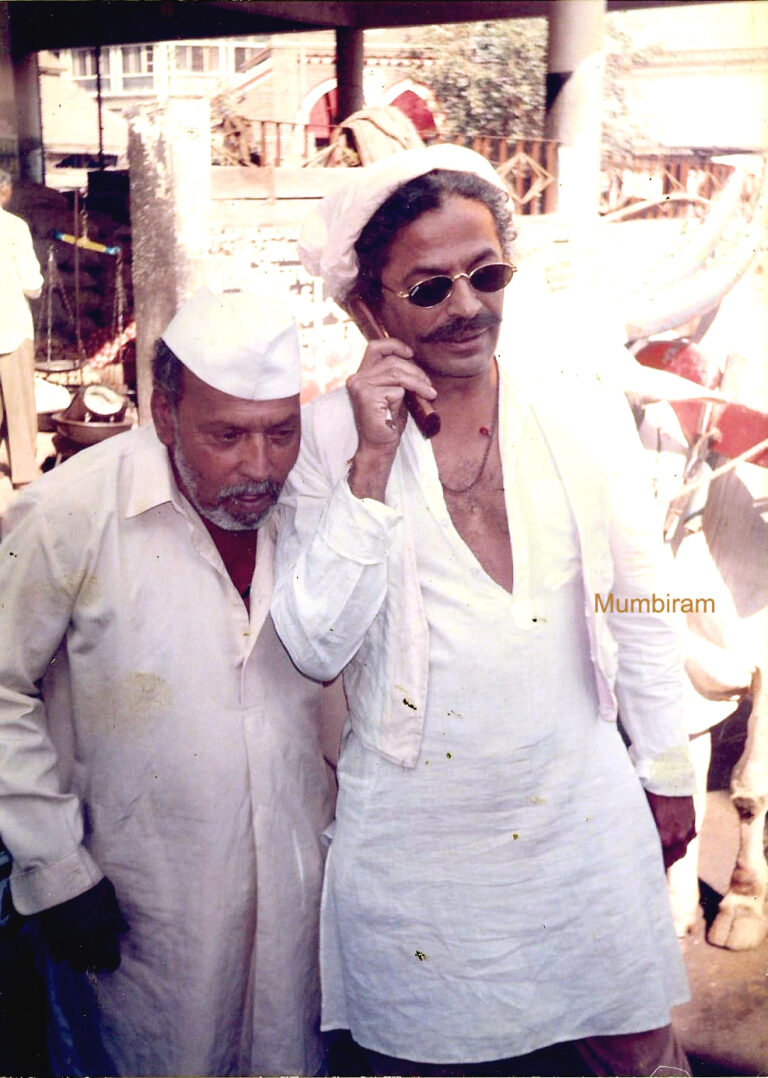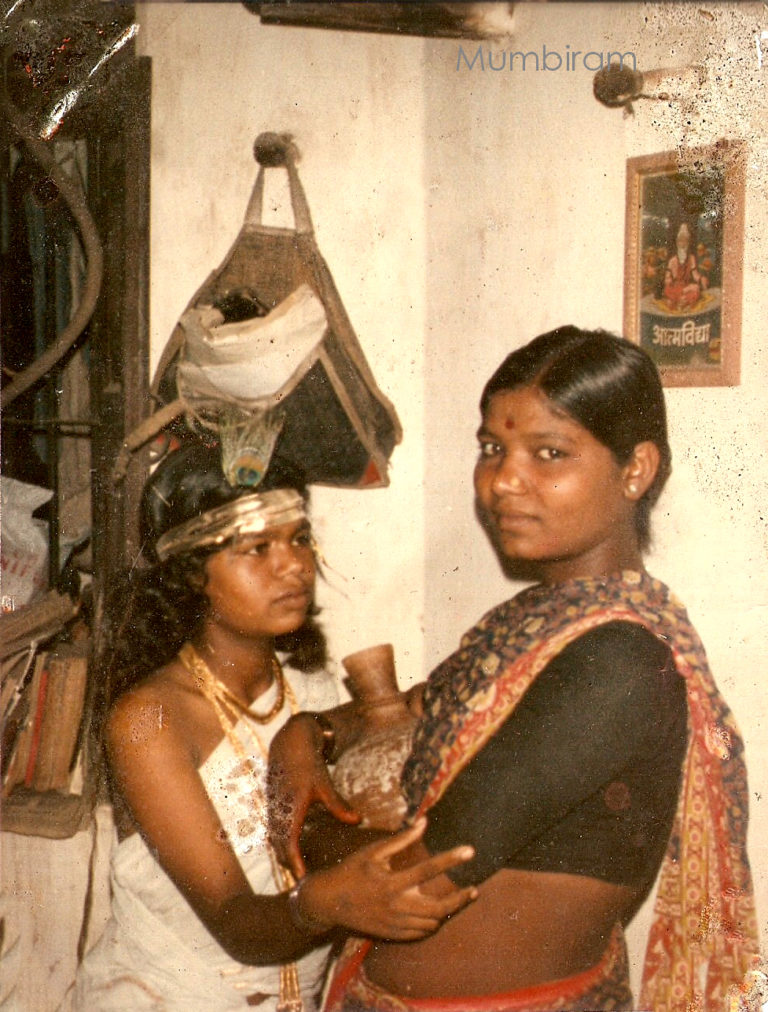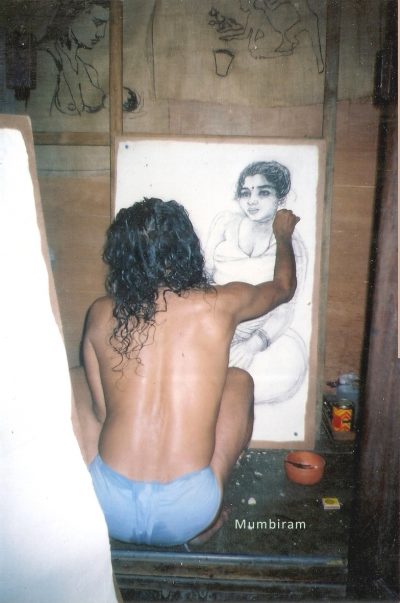
It has been said that there exists an intimate and interesting intertwining of Mumbiram’s life and his art. This quality is considered to be an important facet of Rasa Art as conceived by Mumbiram. In this photograph we see Mumbiram making a charcoal portrait of one of his favourite muses: Kusum. The scene of this action is the balcony of Mumbiram’s legendary studio in Pune’s Mandai vegetable market. Mumbiram distinctly remembered the event and has recounted it whenever he shared this portrait of Kusum. Mumbiram obviously had a hair treatment and a hair wash and mumbiram has decided to make this portrait while his hair dries. Kusum was sitting to the left of Mumbiram, with her back to the balustrade of the balcony. Vrinda has made this Photograph, but Surekha, Kusum’s younger sister-in-law, was also there. Mumbiram has known Kusum ever since she was a young teenager. She was the tallest and the strongest of her gang of ragpicking girls from Yeravda. Mumbiram also found her to be the liveliest and was fascinated by her exquisitely angular character. It’s been decades since, yet Mumbiram still can’t keep his charcoal-smeared hands from depicting the now chubby Kusum.
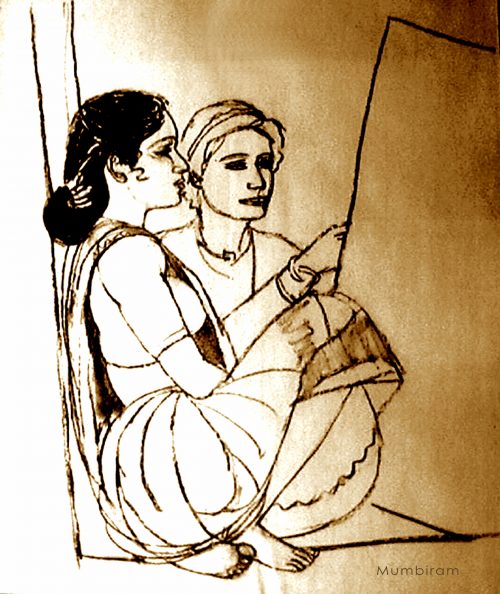
Mumbiram has made a few portraits of Surekha also – in fact, there exists a quick charcoal rendering of Surekha sitting in the very frame of this very door, while an artist is making a rendering on a paper.
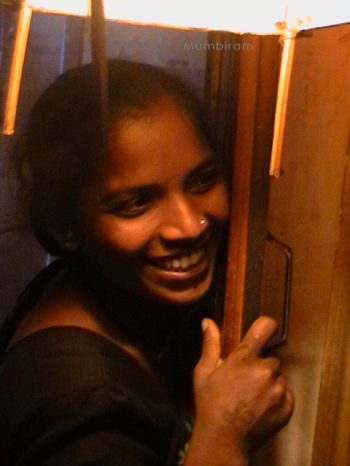
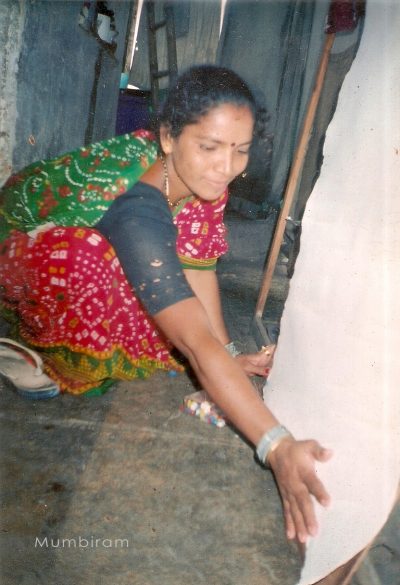
It appears that Surekha was naturally attracted to this door.
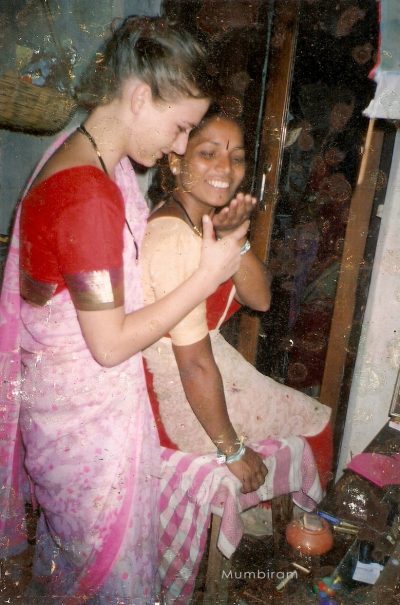
This door also had a mirror-door that was used by Mumbiram’s friends as a looking glass. Here we have a Photograph of Surekha and Vrinda facing that mirror right from where this Photograph was made.
It didn’t take Mumbiram more than twenty minutes to make this portrait. When Mumbiram started, Surekha had made some snide remarks about why Mumbiram was choosing to make a portrait of “out-of-shape” Kusum, when young and tidy Surekha was available. Mumbiram had taken that as a challenge, and proceeded with fully focused attention on his work – his favorite activity – of making another charcoal masterpiece.
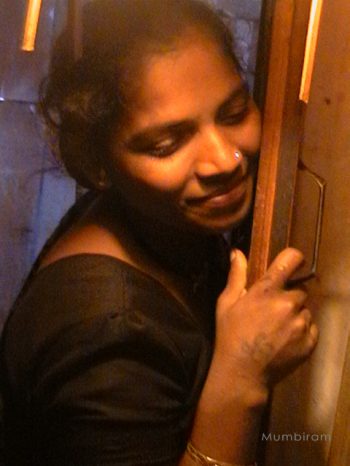
When Mumbiram put his charcoal down and moved away to put more clothes on himself (here he is wearing only his blue Indian Langoti underwear), even Surekha was lost for words.
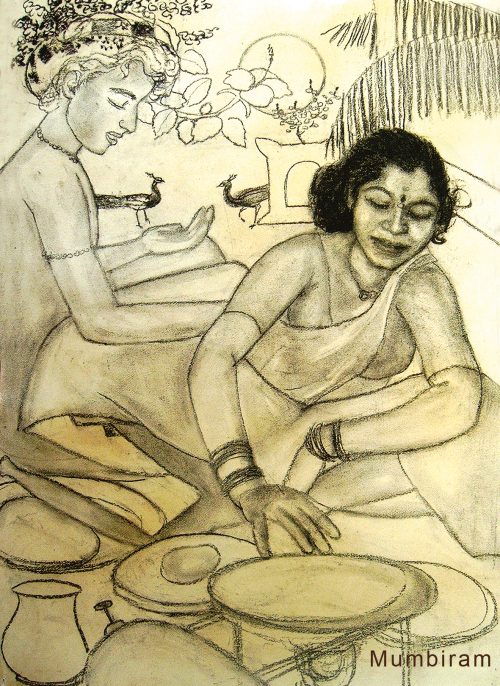
There are other memorable events and happenings that this spot on the balcony outside this door has witnessed. The charcoal of Kusum making Chapatis – “Not by Bread alone”- happened when Kusum was making the Chapatis just to the right of the door on the balcony, and Mumbiram was sitting at that very spot, except the paper on the board was resting against the door. In there also you see a young friend is keeping Kusum company by reading from a book.
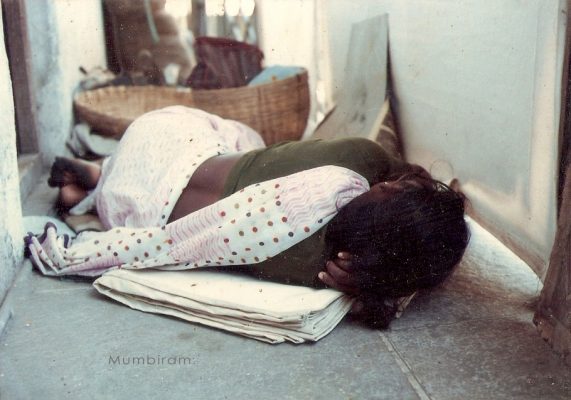
In the very early days when Mumbiram had only recently gotten to know Kusum, she used to arrive early morning, and crash out on folded canvases right at the spot where she was sitting while Mumbiram made this portrait on this day.
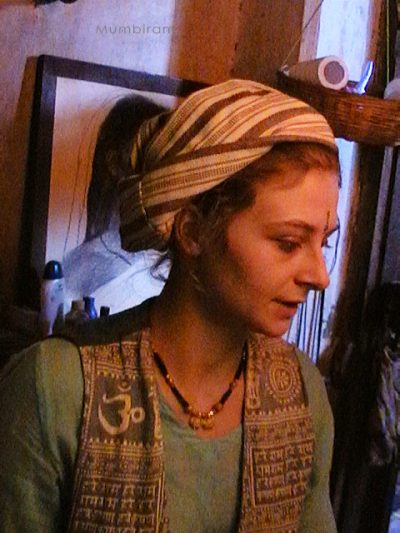
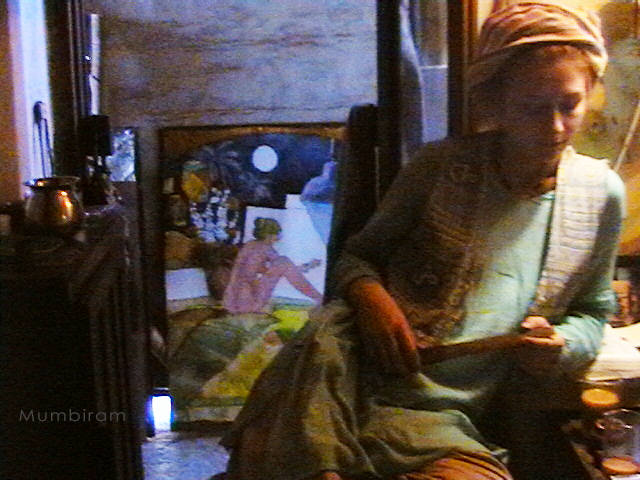
There is a Photograph of Vrinda wearing Mumbiram’s iconic pillowcase hat and his equally famous blue Harinam vest. Through this door behind her, one sees a jubilant Divali that a young traveler to India is enjoying.
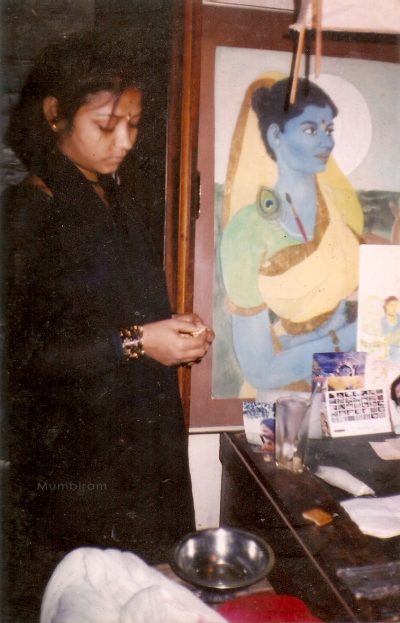
There is this Photograph of Kusum’s daughter Mangal, now a grown up woman, standing in front of Mumbiram’s iconic “Abhisarika” masterpiece that is obviously inspired by Kusum.
